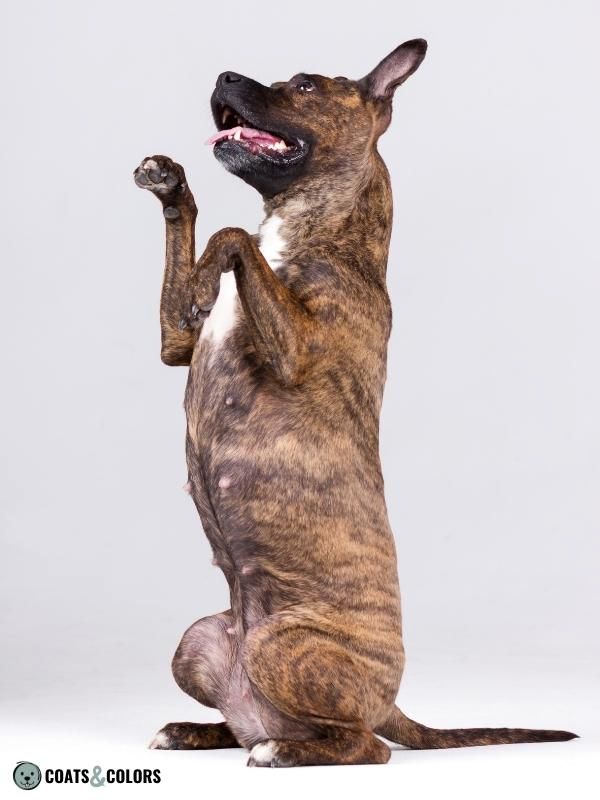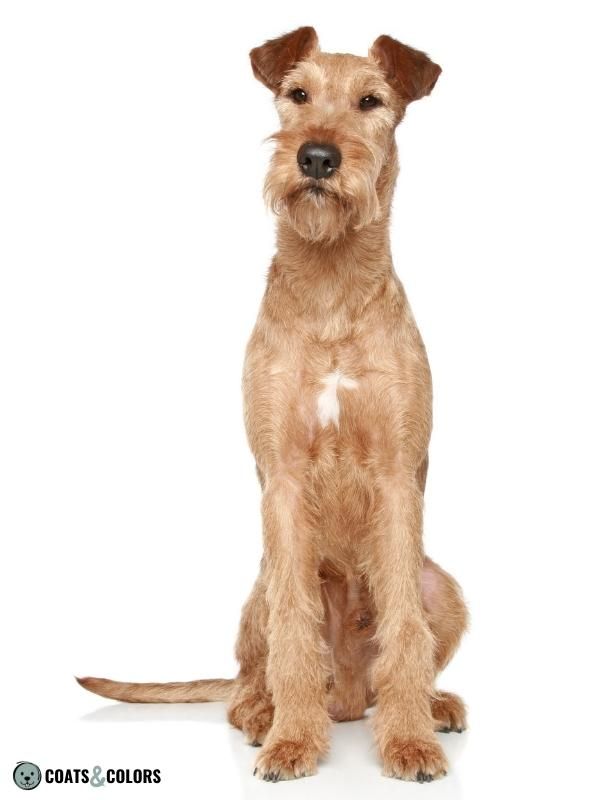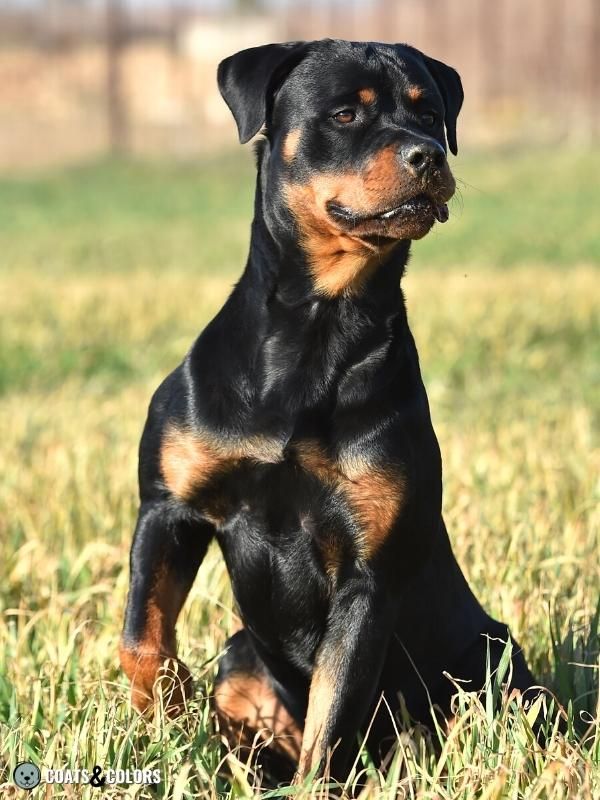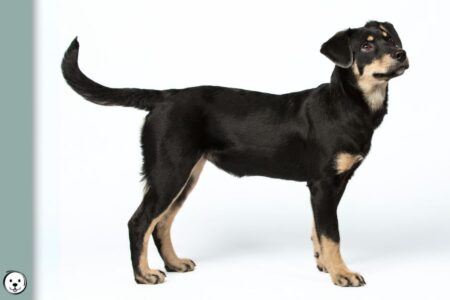The A locus interacts controls when and where phaeomelanin or eumelanin is expressed. Different allelic combinations may cause a clear sable, shaded sable, agouti, agouti saddle, saddle pattern, creeping tan, tan points, or recessive black pattern.
However, A locus expression also depends on the K locus and E locus.
| Pattern | Legacy Testing | New Testing | Terms I Use |
|---|---|---|---|
| Dominant Yellow Clear Sable | Ay | ASIPDY VP1-HCP1 | Ay |
| Shaded Yellow Shaded Sable | Ay | ASIPSY VP2-HCP1 | Ays |
| Agouti Wolf Gray | aw | ASIPAG VP2-HCP2 | aw |
| Saddle Agouti – | aw | VP1-HCP2 | aws |
| Black Saddle Saddle Pattern | at | ASIPBS1 VP1-HCP3 ASIPBS2 VP1-HCP4 ASIPBS3 VP1-HCP5 | asa |
| Black Back Tan Points | at | ASIPBB1 VP2-HCP3 ASIPBB2 VP2-HCP4 ASIPBB3 VP2-HCP5 | at |
| Recessive Black Solid Black | a | ASIPa – | a |
Content
A-Locus Overview
The Agouti-Locus affects the temporal and spatial distribution of phaeomelanin and eumelanin. Together with the E-Locus and K-Locus, it is part of the canine pigment type switching system.
The A Locus controls where and when phaeomelanin is produced at the cost of eumelanin.

If pigment production is not restricted (e.g. by recessive red or dominant black) the A-Locus is responsible for a variety of patterns most of which show some amount of both eumelanin and phaeomelanin.
To express its A-Locus patternm a dog has to be ky/ky at the K-Locus. If he is kbr/-,he will still express his A-Locus pattern but with brindle striping on top of all red or yellow areas.

Not too long ago, there was only a very basic understanding of the different A-Locus phenotypes. Genetic testing could only distinguish between four distinct patterns: Ay>aw>at>a.
But not all known patterns could be explained with just sable (Ay), agouti (aw), tan point (at) or recessive black (a). There was no clear explanation for the saddle pattern seen in Beagles or German Shepherd Dogs nor for differing amounts of dark shading in sable coats.
New genetic studies provide a much better understanding and lead to an expansion of the allelic series at the A Locus. There are now 6 testable alleles at the A-Locus[6]:

ASIP promotes phaeomelanin production and patterns with more phaeomelanin are dominant over patterns with less phaeomelanin[3,6].
But there are many well-known intermediate phenotypes in heterozygous dogs (e.g. at/a expresses with smaller tan points than at/at).
A Locus Calculator
This simple tool can help you predict different A Locus combinations:
The New A-Locus System
Admittedly, the old system (Ay>aw>at>a) works well enough for many breeds.
But it failed to explain all the different pigment patterns seen in some breeds. There was no reliable test for saddle pattern and no one could with certainty predict if a sable would come out as shaded or not.

The new testing system examines two different regulatory elements to determine a dog’s coat color pattern:
Each A-Locus contains one Ventral Promoter and one Hair Cycle Promoter (named after similar genes in mice) which have an independent effect on a dog’s color pattern:
- The ventral promoter (VP) causes phaeomelanin on a dog’s underside
- The hair cycle promoter (HCP) is responsible for hair banding
There are different versions of VP and HCP that vary in activity and cause different pigment distribution patterns:
VP1 is the more active version of the ventral promoter and causes extended tan markings with more yellow on a dog’s underside. It is found in dogs with dominant yellow or a black saddle.
VP2 is the wild type version of the ventral promoter and causes normal tan markings especially on a dog’s underside. It can be found in dogs with shaded yellow, agouti and black back patterns.
HCP1 causes more yellow in hair banding and causes varying amounts of only black-tipped hairs in dominant yellow and shaded yellow coats.
HCP2 causes normal hair banding and is found in dogs with an agouti or agouti saddle pattern.
HCP3, HCP4 and HCP5 have lost the ability to cause hair banding. While only HCP4 was found in dogs with a solid black saddle, all three versions were found in dogs with black back phenotypes.
VP and HCP are not different genes but different regions next to the ASIP gene!
So any combination (e.g. VP2-HCP1 or VP1-HCP4) will be inherited as a package since any separation or rearrangement is very unlikely. A particular nucleotide sequence (in this case, any combination of VP with HCP and ASIP) on the same chromosome is called a haplotype.
In other words, a haplotype is a set of DNA variations that tend to be inherited together.
Different haplotypes represent the new alleles at the A-Locus and cause a variety of patterns:
| Allele | VP | HCP |
| Ay | VP1 | HCP1 |
| Ays | VP2 | HCP1 |
| aw | VP2 | HCP2 |
| aws | VP1 | HCP2 |
| asa | VP1 | HCP4 |
| at | VP2 | HCP3,4,5 |
| a | (VP2) | (HCP3) |
The combination of VP1 and HCP2 is rare in dogs, it creates a mostly yellow dog with a banded saddle on top. The saddle agouti phenotype seem to be common mostly in German Shepherd Dogs (they call it “pattern sable” because their breed term for an agouti pattern is “sable“).
A-locus Alleles
Read more about the different patterns known to be caused by the A-Locus. Remember, any pattern can temporarily express more eumelanin than expected in puppy coats.
The ASIP gene at the A locus on chromosome 24 codes for agouti signalling protein. ASIP interacts with the melanocortin 1 receptor (E locus) to determine when a pigment cell will produce phaeomelanin.
Different promoters affect how actively ASIP will be expressed in different regions of the body. This leads to variations in dorsal hair banding and the extent of ventral tan markings in different patterns.
Dominant Yellow Ay
Dominant yellow dogs have an almost solid yellow to red coat color in all pigmented areas.
While puppies can still have some amount of darker hair tips the adult coat shows minimal to no dark shading. This phenotype is also known as clear sable in many breeds.
Homozygous dogs (Ay/Ay) probably on average turn out with a much more uniform yellow coat than heterozygous (e.g. Ay/at or Ay/a) dogs.

An all red or yellow coat can easily be mistaken with recessive red. But usually dominant yellow dogs have black whiskers, solid nose pigment or some darker puppy shading or at least some single black hairs somewhere on the body.
Since the adult coat has no or almost no eumelanin this phenotype can hide any pattern that needs at least some eumelanin to be visible, e.g. merle, greying or dilution.
But depending on other coat color loci some dominant yellow dogs can have a black mask or show a brindle pattern.

Dominant yellow is an old phenotype and was probably already present during early dog domestication[6]. It is very common in many of today’s dog breeds from all breed groups like Basenji, Boxer, Irish Terrier or Great Dane.
This almost solid yellow phenotype is caused by a more active than usual ventral promoter VP1 with a more active than usual hair cycle promoter HCP1. This causes a broadened area with yellow pigment and almost no dark hair banding.
Shaded Yellow Ays
Shaded yellow or shaded sable causes an all red or yellow coat in all pigmented areas. But in this case, dogs express moderate to heavy dark shading in the form of dark hair tips.

Again, shading can be even more abundant in puppy coat. Typically these dogs go through a paler phase during adolescence and some shading returns later in the adult coat.
Dark-tipped hairs usually concentrate on the dorsal area and can be extended in dogs that have a melanistic mask. Heterozygous dogs (e.g. Ays/aw) might have more shading than homozygous dogs (Ays/Ays).

Since there is some eumelanin visible these dogs can express some of the colors and patterns found on other loci. Shaded sable dogs can have a somewhat visible sable merle pattern or have a distinct liver sable or dilute sable look about them.
Shaded yellow can be seen in dogs with a normal ventral promoter VP2 and an active hair cycle promoter HCP1. This causes more yellow pigment on the ventral areas but enables some shading in the upper body parts.
Agouti aw
Agouti causes banded hair on a dog’s upper side while the coat on the ventral area remains clear red or yellow without banding.
Banding is defined as darker and lighter areas in single hairs. This is caused by alternating between eumelanin and phaeomelanin production during hair growth.
Homozygous dogs (aw/aw) tend to be a littler lighter compared to heterozygous dogs (aw/at or aw/a) Saddle carriers (aw/asa) are thought to express a banded agouti saddle but no dog with this phenotype has been tested with the new system yet.

Since agouti is a pigment pattern found in many wild animals like grey wolves it is often called wolf sable or wolf grey.
Dogs with this pattern have a normal hair cycle promoter HCP2 that causes banded hairs and a normal ventral promoter VP2 that only lightens a dog’s underside and facial markings.
Black Saddle asa
Dogs with saddle tan are born with a tan point pattern but their tan markings soon begin to expand until black is restricted only to a dog’s neck or mantle.
This causes a pigment pattern that ranges from creeping tan up to a classic saddle pattern.
Homozygous dogs (asa/asa) have a full saddle. But many (not all) heterozygous dogs (asa/at or asa/a) express a creeping tan phenotype with large tan markings on their face.
Creeping tan covers the whole spectrum of phenotypes between a full saddle and tan points.

(GSDs also has a black mask on top of their pattern)

The tan markings are too large for real tan points (at/-) but too small for a real saddle (asa/asa)
Saddle tan is caused by a combination of an active ventral promoter VP1 with a non-working hair cycle promoter HCP4. The yellow areas on a dog’s underside are larger than usual while the upper body can’t express true banded coat and will be mostly solid black.
Tan Points at
Also known as black-and-tan or black back the tan point phenotype is created by a black dorsal pattern with symmetrical tan markings.
Lighter markings are found on the cheeks, eyebrows, throat, chest, belly, lower legs and under the tail[4].
Dogs that carry for recessive black (at/a) tend to have smaller points than homozygous dogs (at/at).

In dogs with a classic black-and-tan phenotype we can expect a normal ventral promoter VP2 that clears the typical areas of tan markings from banding while the rest of the coat will be solid black because of a non-working hair cycle promoter HCP3, HCP4 or HCP5.
Recessive Black a
The ASIP gene works by telling the E-Locus when and where to switch back to phaeomelanin production.
But a dog that simply has no working ASIP can never switch back to phaeomelanin production and can only produce black pigment. And this is exactly what happened in recessive black dogs.

Since this is the most recessive trait in the allelic series of the A-Locus this phenotype is called recessive black. It creates a solid eumelanin-colored coat in all pigmented areas.
But for some reason, some dogs with a/a still have some tan bleed through with clearly visible tan markings on their legs or around their eyes.
Recessive black, for now, was only found in dogs with a VP2–HCP3 haplotype (black back).
However, the mutation causing the loss of function that leads to a solid black phenotype was found in a completely different place inside coding regions of the A-Locus.
Dogs with a have both the mutation for tan point and the mutation for recessive black. But they do not express tan points because the additional “a mutation” renders their gene product non-functional.
Some testing companies (looking at you, Wisdom Panel/MyDogDNA) decided to report what should be a/a as at-a/at-a or at/at + a/a which is just super confusing to their customers.
A-Locus Testing
These are the new terms used for allelic variants at the A-Locus:
| ASIPDY (Ay) | Dominant Yellow, Clear Sable |
| ASIPSY (Ays) | Shaded Yellow, Shaded Sable |
| ASIPAG (aw) | Agouti, Wolf Grey |
| ASIPBS (asa) | Black Saddle |
| ASIPBB (at) | Black Back, Tan Point |
| ASIPa (a) | Recessive Black |
The new system can explain all the different ASIP phenotypes more precisely. This renders the old allelic series (Ay, aw, at, a)[1,3,4] and also the proposed recombinant ayt allele[5] somewhat irrelevant.
But the old nomenclature of the A-Locus alleles (Ay>aw>at>a) is a long-established system and will surely be around in conversations and genetic testing for some time. So it might make sense to understand both systems before discussing coat color genetics with other dog people…
And for now, not every company tests for the new variants. And as said the old system has its shortcomings:
- In some breeds at can not be detected with the old testing method. Tests will by default give back the wild type aw, e.g. in many Border Collies an at/at dog might sometimes test as aw/at or aw/aw.
- Any sable coat (Ay) can be clear or shaded since the old phenotype description was just an umbrella term for both phenotypes.
- Dogs with black saddle test as at/- and the saddle pattern was considered a modified version of tan points caused by the now obsolete RALY locus[7].
Learn More
Links
[1] Dreger DL, Schmutz SM. A SINE insertion causes the black-and-tan and saddle tan phenotypes in domestic dogs. J Hered. 2011 Sep-Oct;102 Suppl 1:S11-8. PMID: 21846741. https://doi.org/10.1093/jhered/esr042
[2] Kerns, J.A., Newton, J., Berryere, T.G. et al. Characterization of the dog Agouti gene and a nonagoutimutation in German Shepherd Dogs. Mamm Genome 15, 798–808 (2004). https://doi.org/10.1007/s00335-004-2377-1
[3] Berryere TG, Kerns JA, Barsh GS, Schmutz SM. Association of an Agouti allele with fawn or sable coat color in domestic dogs. Mamm Genome. 2005 Apr;16(4):262-72. PMID: 15965787. https://doi.org/10.1007/s00335-004-2445-6
[4] Dreger DL, Schmutz SM. A SINE insertion causes the black-and-tan and saddle tan phenotypes in domestic dogs. J Hered. 2011 Sep-Oct;102 Suppl 1:S11-8. PMID: 21846741. https://doi.org/10.1093/jhered/esr042
[5] Dreger DL, Anderson H, Donner J, Clark JA, Dykstra A, Hughes AM, Ekenstedt KJ. Atypical Genotypes for Canine Agouti Signaling Protein Suggest Novel Chromosomal Rearrangement. Genes. 2020; 11(7):739. https://doi.org/10.3390/genes11070739
[6] Bannasch, D.L., Kaelin, C.B., Letko, A. et al. Dog colour patterns explained by modular promoters of ancient canid origin. Nat Ecol Evol 5, 1415–1423 (2021). https://doi.org/10.1038/s41559-021-01524-x
[7] Dayna L. Dreger, Heidi G. Parker, Elaine A. Ostrander, Sheila M. Schmutz. Identification of a Mutation that Is Associated with the Saddle Tan and Black-and-Tan Phenotypes in Basset Hounds and Pembroke Welsh Corgis. Journal of Heredity, Volume 104, Issue 3, May-June 2013, Pages 399–406. https://doi.org/10.1093/jhered/est012

Hi! I’m Steffi. I am a biologist and a big time dog nerd. You are curious about coat color genetics? You’ve come to the right place! Read more.







